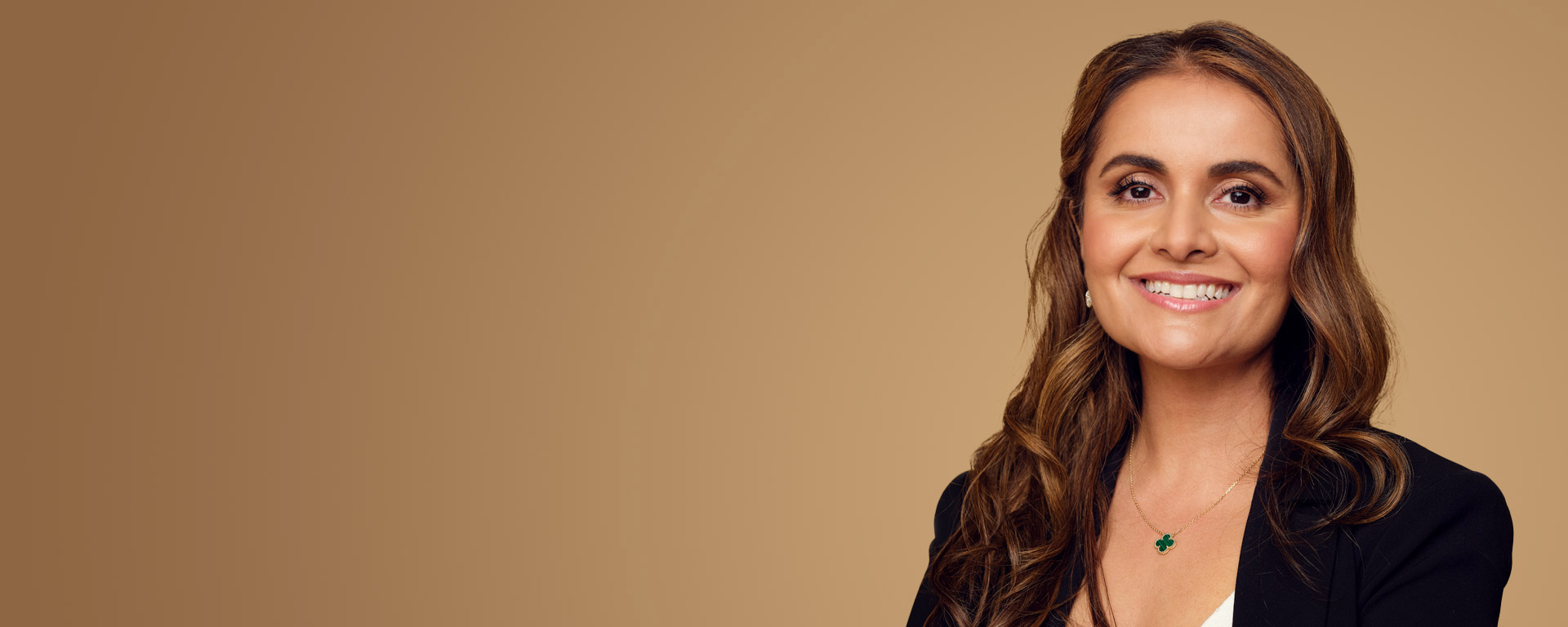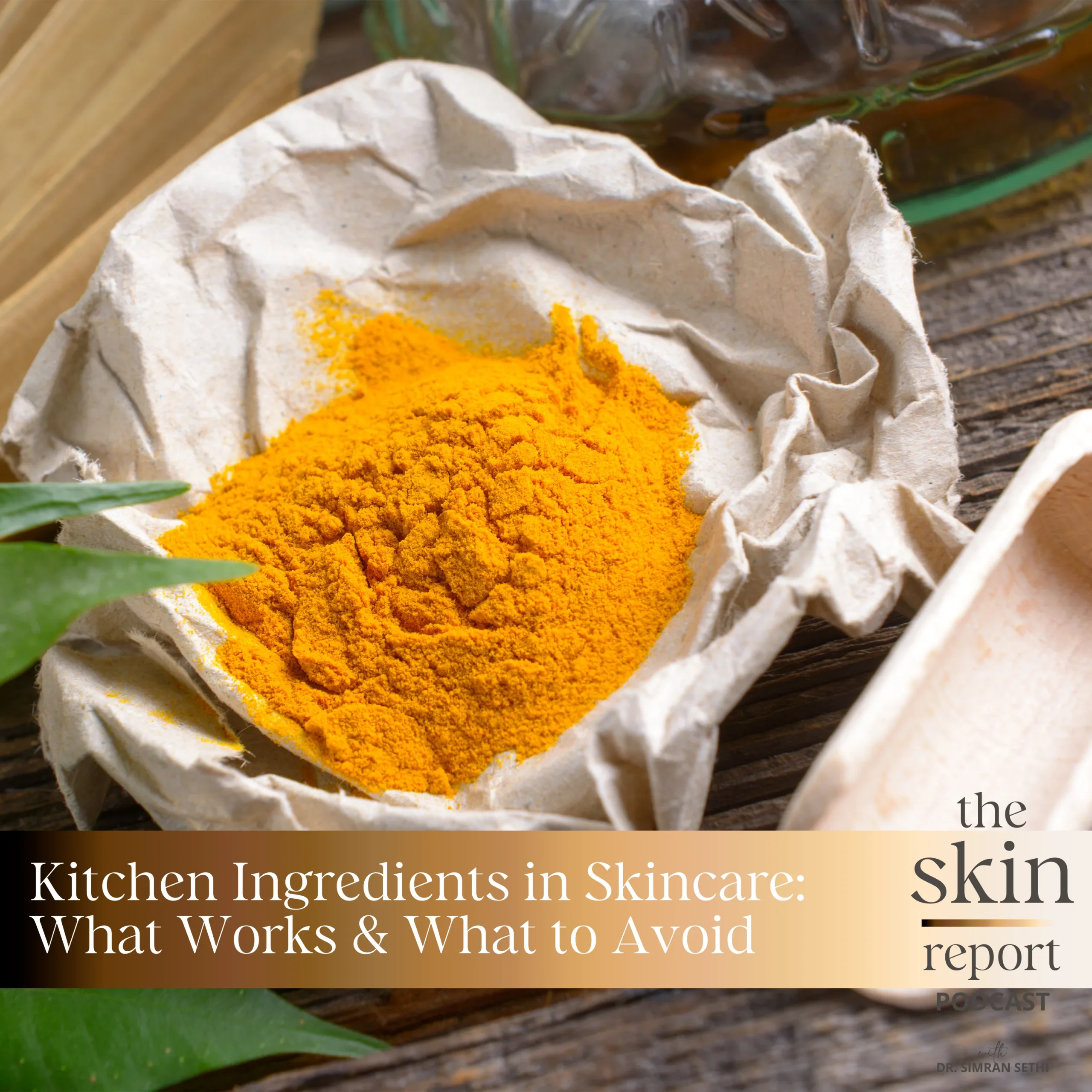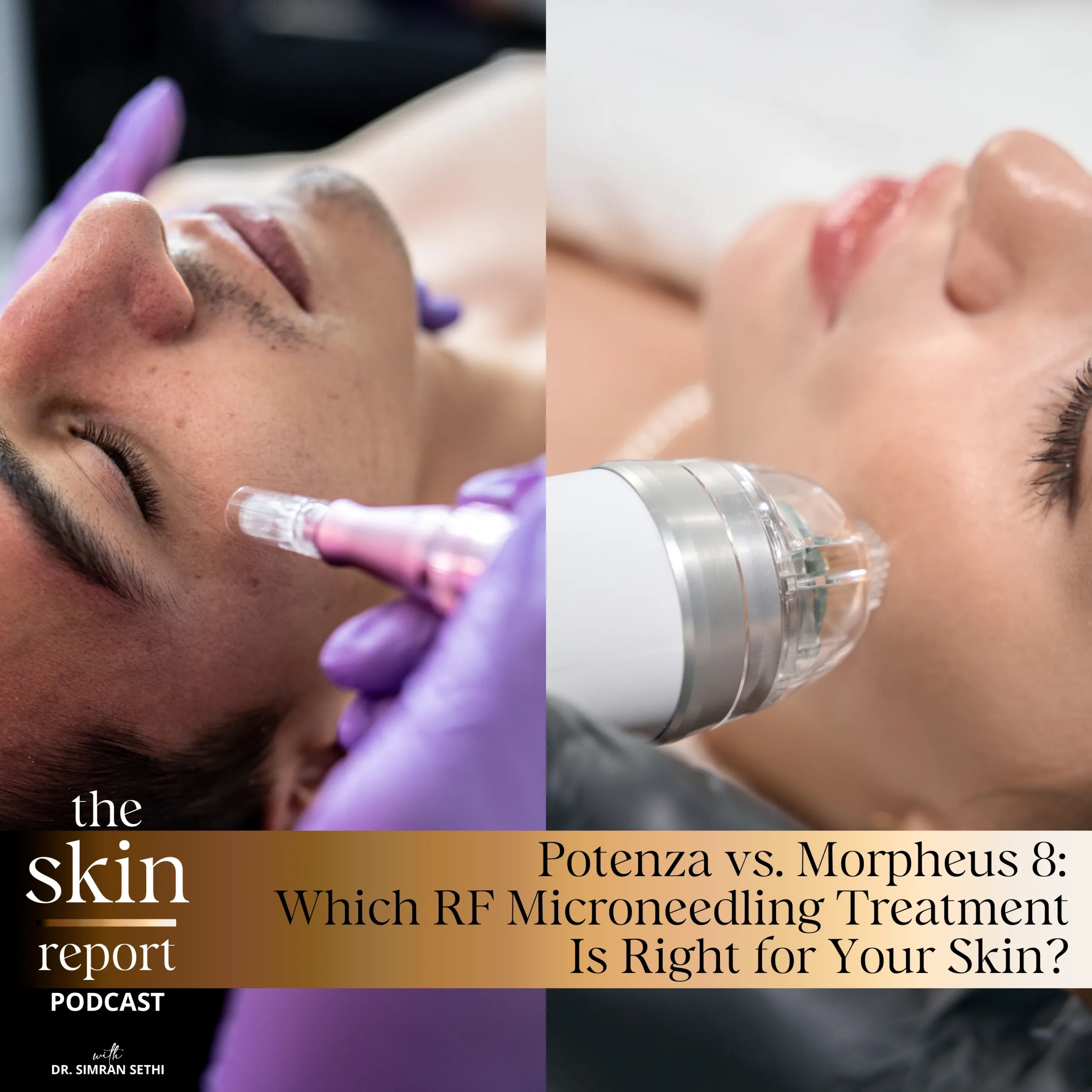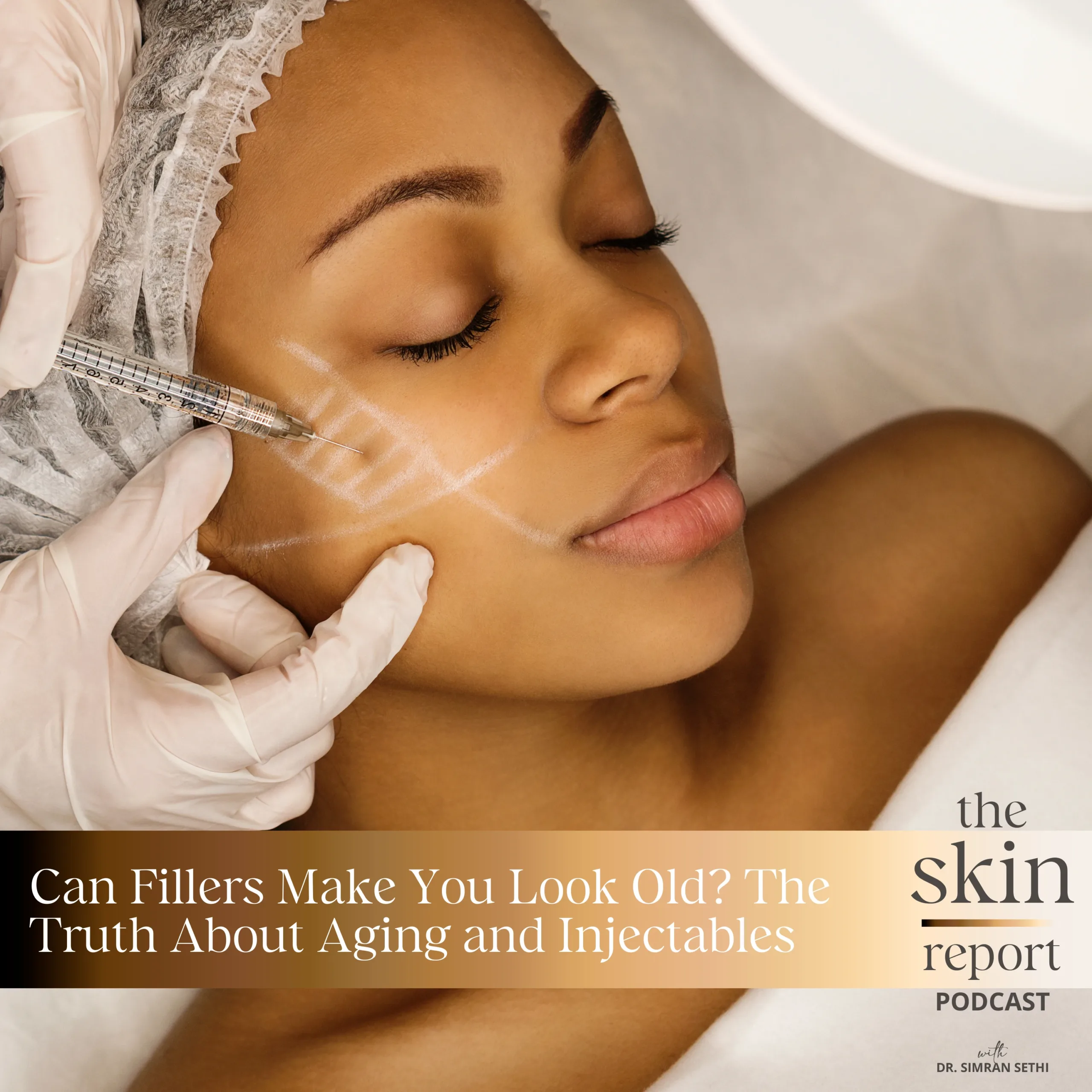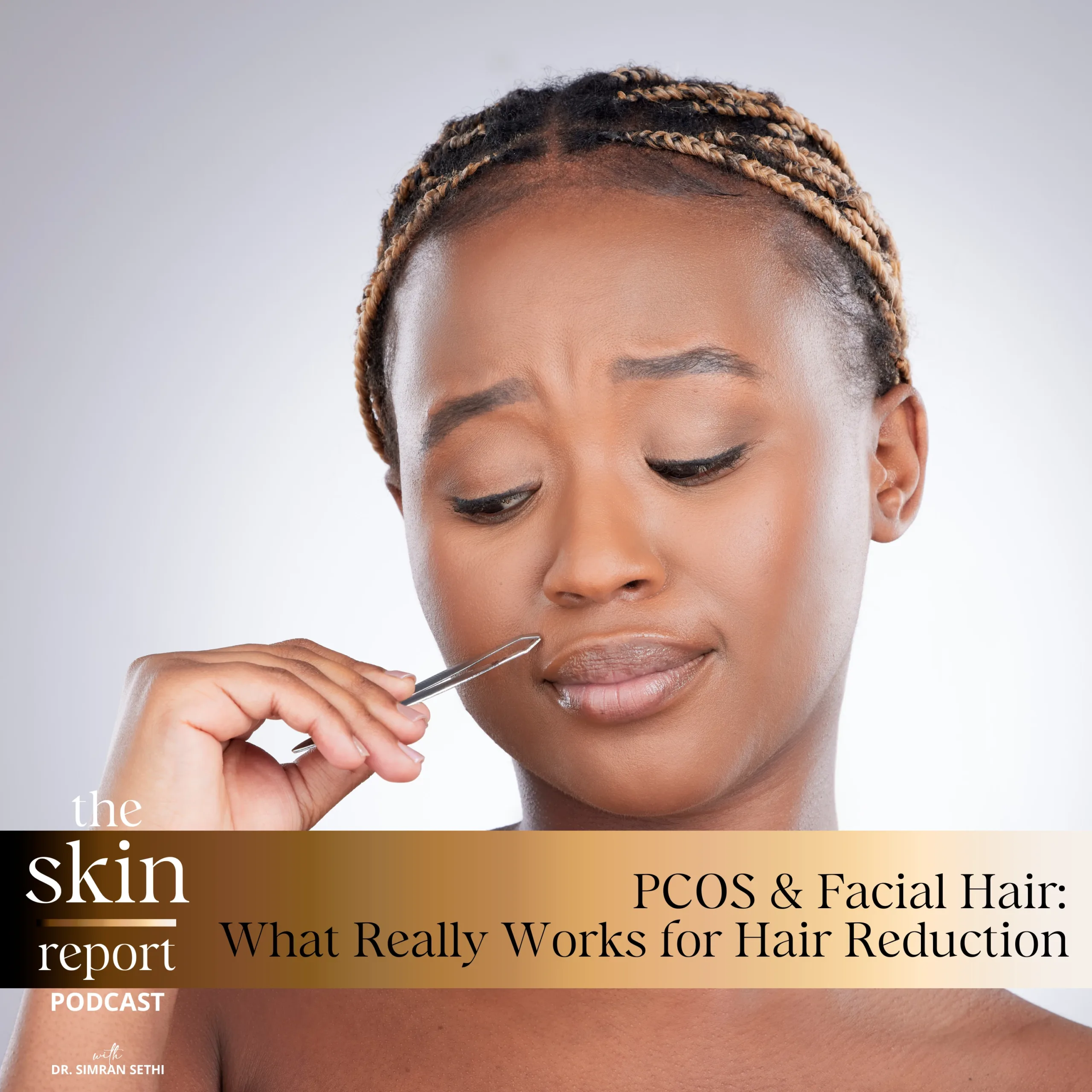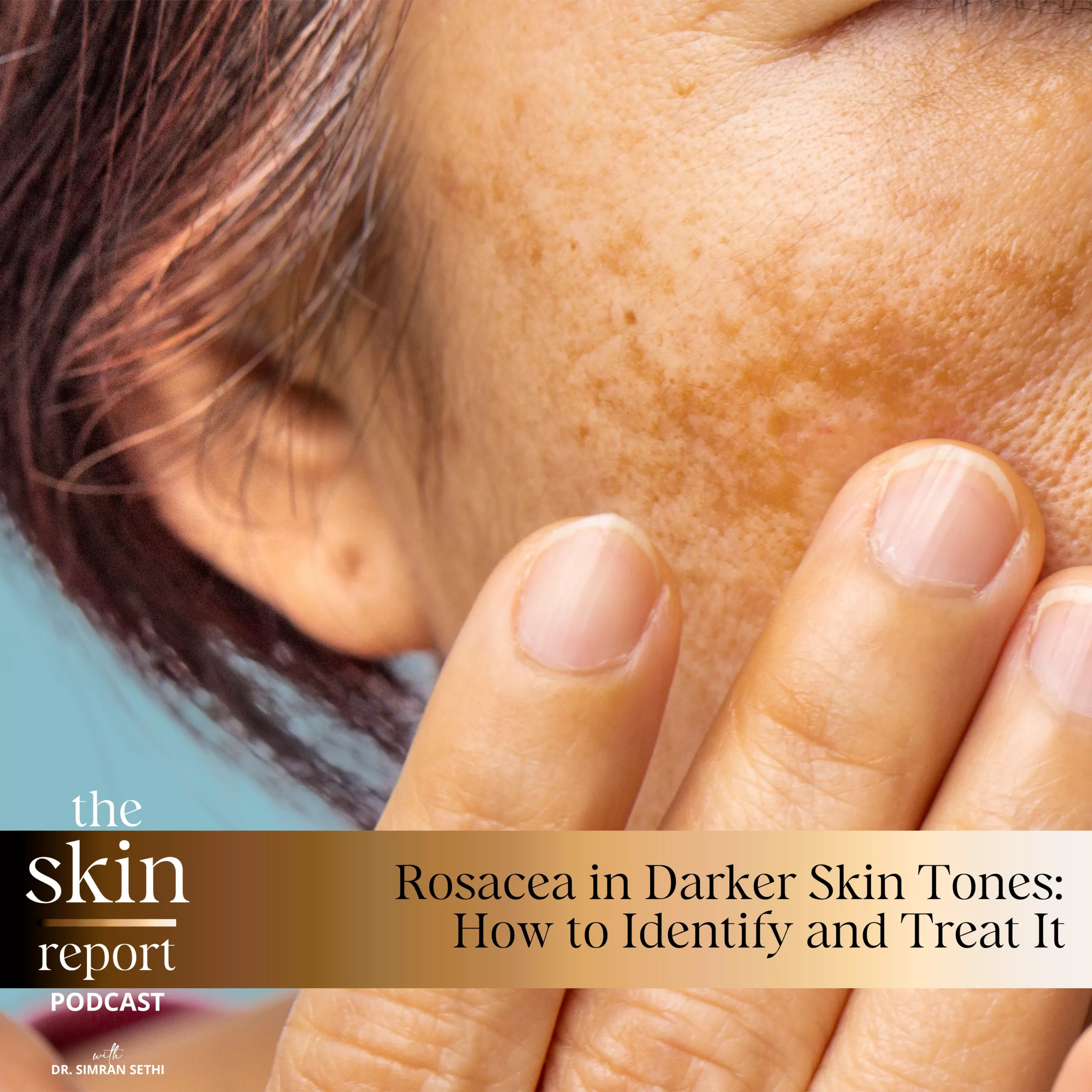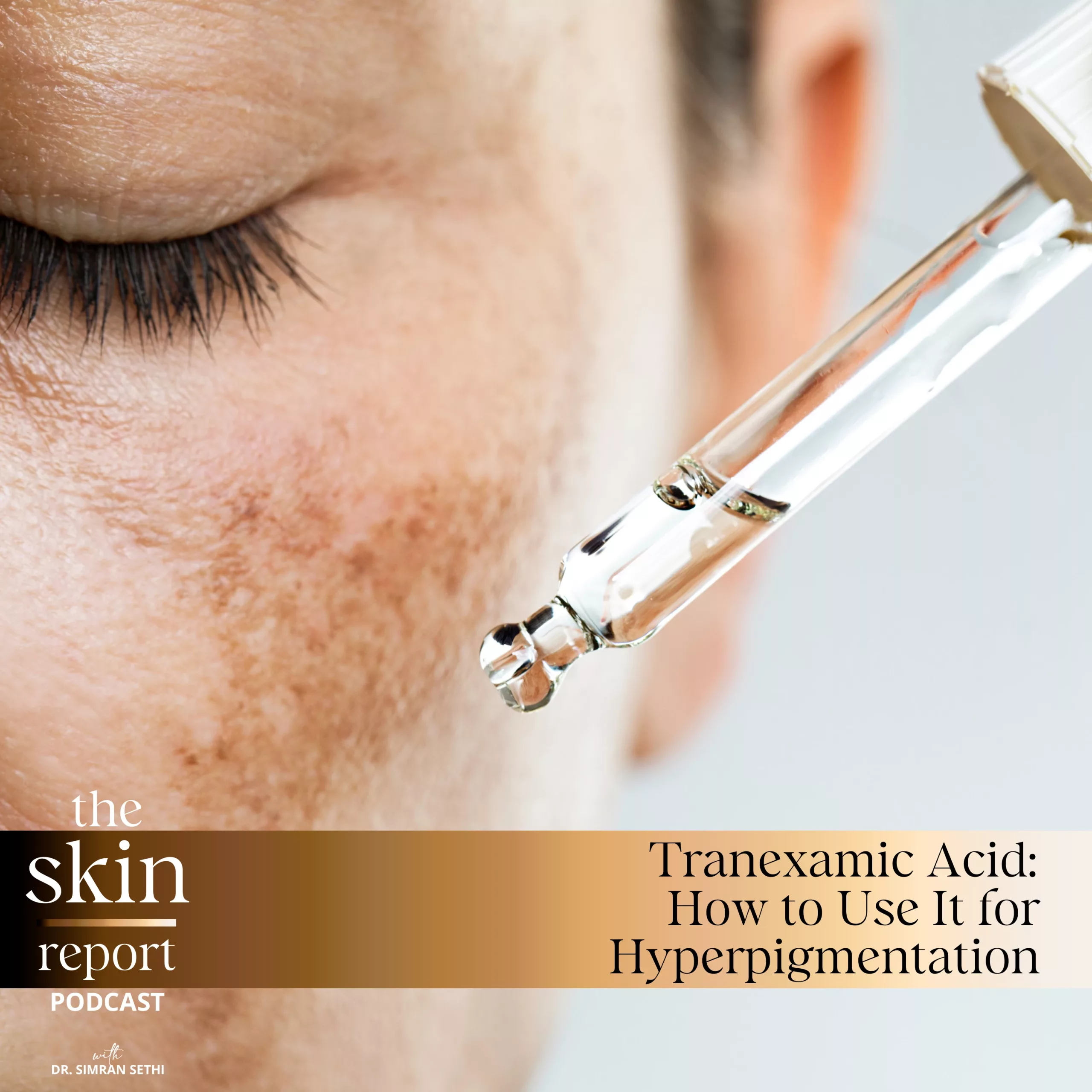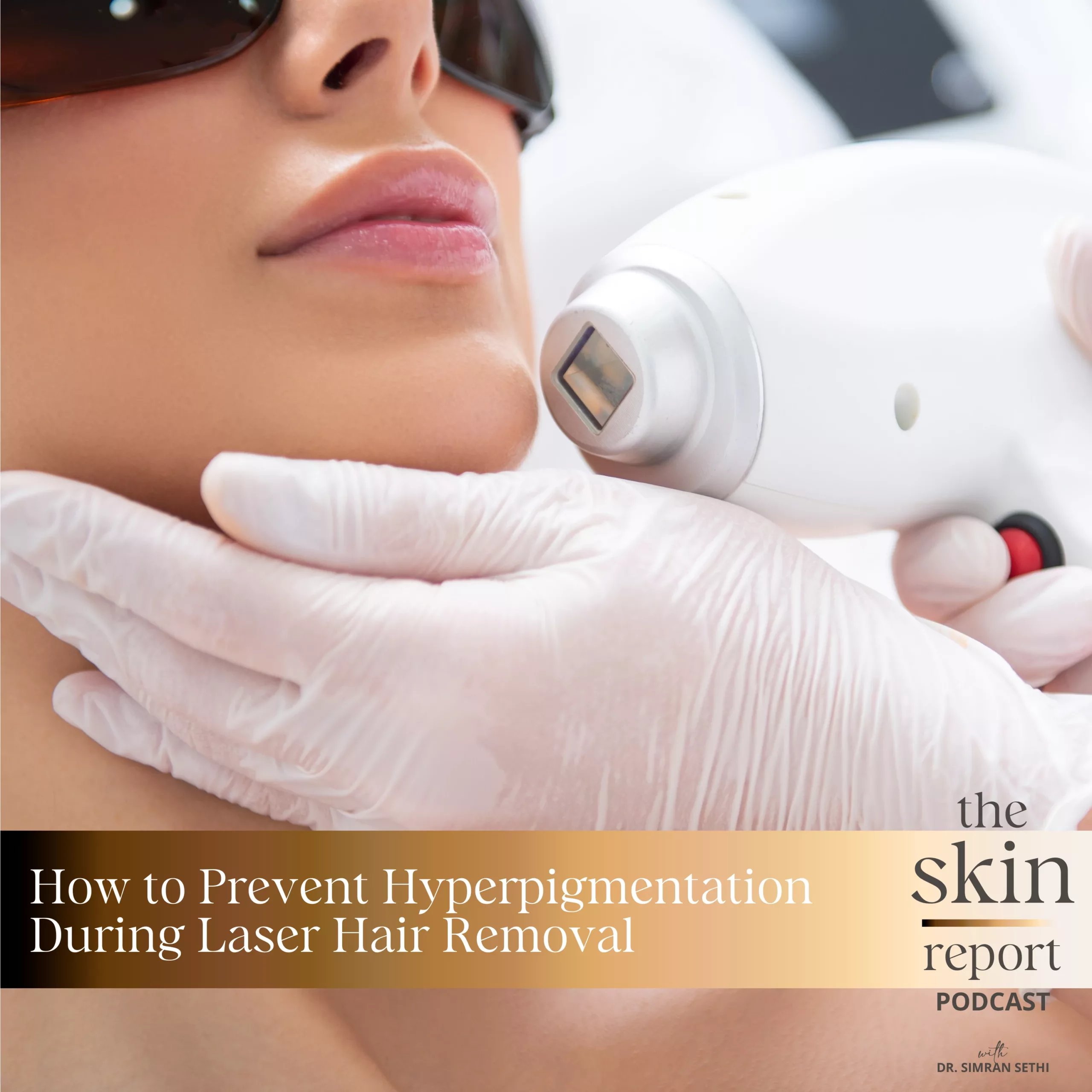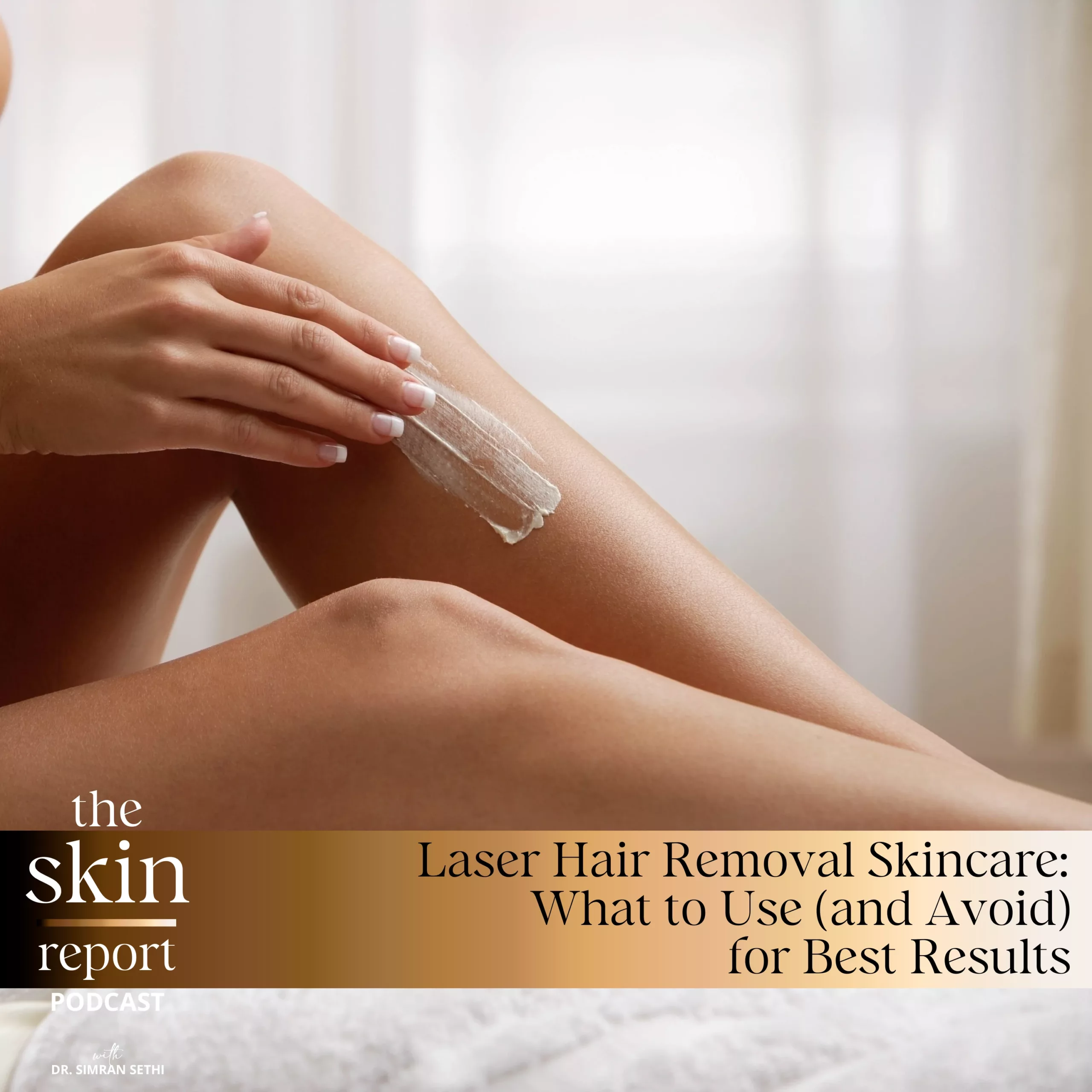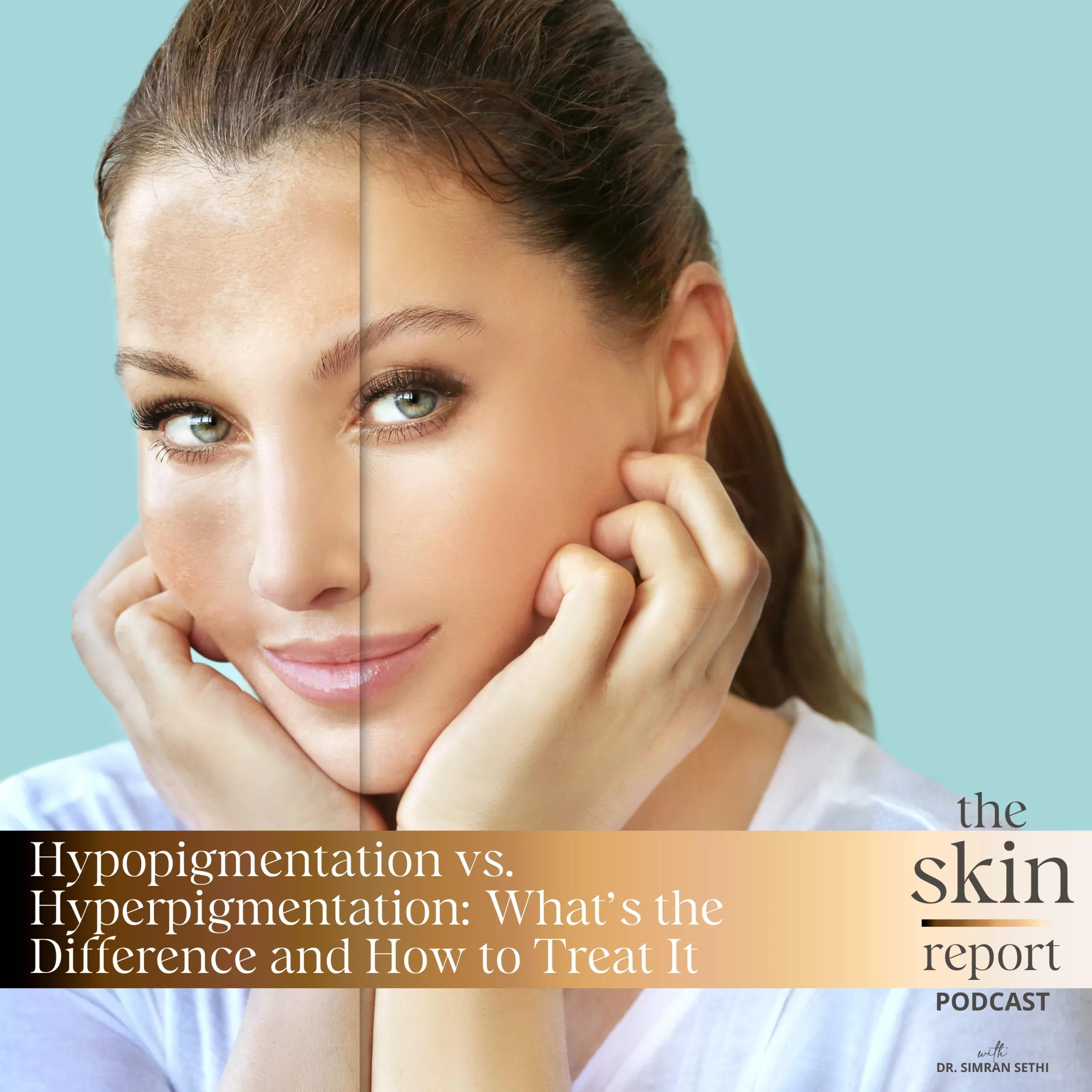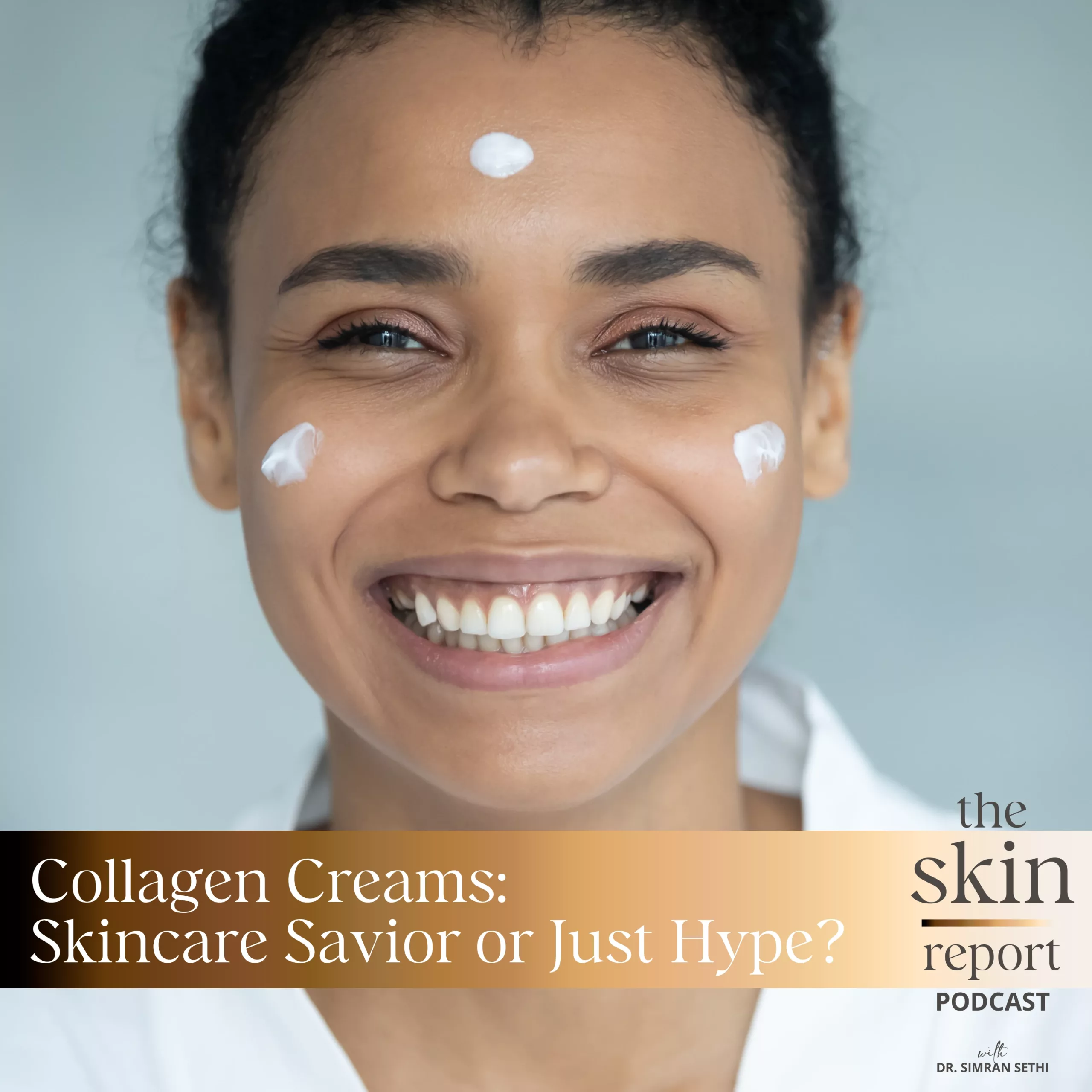There are a lot of myths surrounding Botox. But today, more and more people are turning to Botox to treat their skin and maintain a more youthful appearance. When administered in the right places by an experienced injector, Botox can be an effective part of a wrinkle-prevention strategy. So what information is true, what is false, and what should people know if they are considering trying Botox?
The Skin Report is a podcast created to educate listeners on methods to improve skin health for people of all ethnicities and ages. This week, host Dr. Sethi busts popular Botox myths, discusses the history behind Botox, and explains how Botulinum toxins like Botox work to give patients a youthful appearance. She also shares the differences between Botox, Xeomin, and Dysport and provides advice for incorporating these neurotoxins into an anti-aging regime.
Beauty Instagram: https://www.instagram.com/renewmd_beauty/
RenewMD Beauty Medical Spas, California: https://renewmdwellness.com/
This transcript was exported on November 1, 2022 -view latest version here.
Skincare can sometimes feel overwhelming. Whether it’s finding the right products, ingredients, or treatment, there’s a lot out there. But not always for women of color. That’s why I set out to educate myself and others, so that we can all feel beautiful in our skin. Hello and welcome to The Skin Report. I’m Dr. Simran Sethi, an internal medicine doctor, mom of three, and CEO and founder of Renew MD Medical Spas and Skin by Dr. Sethi.
For the months of September and October, we took a deep dive into specific topics, skin of color and melasma respectively. While we won’t be covering a four part serious in November, we will be tackling something else, skincare trends and hot topics. Today’s hot topic is Botox. Before we dive into the myths around Botox, I want to first discuss what it is. I feel we often hear that word or seed in gossip columns, speculating which celebrities have received work, but do we really understand what it entails? Let’s rewind 30 years ago. Botox gained popularity in the 1990s and has only gotten more popular as an anti-aging tool. Botox is actually a brand name and the product itself is called botulinum toxin, much like Kleenex versus tissues. However, botulinum toxin is a mouthful. So for the purposes of our discussion today, I will call it Botox. You may hear me reference other types of botulinum toxins currently on the market such as Xeomin and Dysport, and more recently approved Daxxify.
So what is Botox? Botox is derived from a bacteria but acts as a neurotoxin that stops the signal between our nerve cells and muscle to prevent muscle contraction. When injected into muscles, Botox stops its movements. Hence why Botox is so often injected into certain facial muscles. Botox is temporary. It remains active for three to six months, though in my clinical experience, it usually just lasts three months For most people. This means that the effect of Botox is at its peak for two to three months, and after two months, Botox will start to lose its effect, and by three months, it will not be active anymore and your muscles will start regaining movement.
So how does this help with wrinkle reduction? First, let’s cover what causes wrinkles in the first place. UV and pollution exposure to the skin breaks down collagen and elastin proteins in our dermis, our deeper skin layer, which causes weakening of the skin. When skin weakens, it’ll start to wrinkle. Most importantly though, weakened skin is more susceptible to wrinkles caused by facial muscles. Which brings me to my next point, facial movements. I think we’ve all noticed that we tend to get wrinkles around our eyes, between our brows and our foreheads, the muscles we move the most when speaking and emoting. So in order to have a natural appearance, we should only inject Botox into certain muscles to arrest movement and prevent wrinkling of the skin on top. At this point, I also want to clarify the difference between Botox and dermal fillers.
Fillers do exactly what their name suggests. They fill spaces where there’s a loss of volume under our skin, or are injected into the lips to plump them up. While Botox temporarily stops muscle activity to prevent skin above the muscle from wrinkling. Fillers are a gel-like compound, usually made of a hyaluronic acid, that are injected underneath the skin in areas where there has been a loss of natural fat pads that normally lift up our skin and give it a youthful appearance. Fillers are not the right choice for prevention or correction of wrinkles, but are excellent for volume restoration in the face. This wouldbe a great topic for a future episode where we can dive into where fillers can be injected to give a natural appearance, and most importantly, when not to use fillers. Going back to today’s topic, stick around as I’ll dive into the different types of Botox and why they can be helpful in preventing anti-aging effects.
At the start of this episode, I mentioned that there are three types of botulinum toxin brands in the US market. While these brands accomplish similar results, they slightly vary by the type of neurotoxin and the protein capsule around the neurotoxin. Botox, or onabotulinumtoxinA, was the first botulinum toxin studied and developed for cosmetic use, which is why it has the largest market share today. While many people opt for Botox, I think it’s important to know that there are two other brands available should you need or want their product. In addition to Botox, there’s also Xeomin, which is a botulinum toxin that is wrapped in a very thin protein structure.
I mostly use Botox in my practice, but I’ve found that some people can have an allergic reaction to the robust protein capsule that surrounds the neurotoxin. In this case, I will use Xeomin, as it’s an almost naked neurotoxin with barely any proteins around it. The chances of someone having an allergic reaction to Xeomin after having a reaction to Botox are slim. The third type of botulinum toxin is Dysport, which has a different protein envelope than Botox and Xeomin. Dysport was introduced to the market years after Botox, but before Xeomin. It’s an effective neurotoxin, but I don’t use it in my practice as Botox has a stronger clinical history, and Xeomin is a better option for those with an allergy to Botox due to its sparse protein envelope.
At the end of the day, Botox, Xeomin, and Dysport are all a type of neurotoxin that have a different protein structure around it. The type of toxin and its protein structure affect the longevity of its effect and some toxins work better than others. But they’re still very, very similar. Which is why the brand of the neuro toxin injections is not as important as the experience of the injector. So always factor that in first when making a decision about who to trust with your treatment.
Next, I want to tackle the most popular questions my patients ask me,and one that you may be thinking yourself. As mentioned earlier, Botox only arrests muscles for three to four months. This may come as a surprise or even disappointment to some of you. You may be asking yourself, “What’s the point? Why even start?” I completely understand this point, but I want to bring up muscle memory. If you repeatedly do a movement, like frowning at your computer screen while working, that muscle will develop muscle memory, and keep contracting even when you are not deliberately contracting it. By doing Botox in the correct intervals, you will essentially help your muscles forget to involuntarily contract, which means that they will not move when you’re not purposely moving them.
The good news is that, over time, Botox will not only stop your muscles from moving but eliminate muscle memory so that you will use less and less Botox. This process takes a good one to two years of using Botox every three to four months, but as I always stress my patients, it will make a difference in the long run. In fact, I will discourage a patient from doing Botox once a year, usually for a special occasion, as it’s a waste of money if not done at regular intervals.
While looking at the most popular facial spots to inject Botox, we must return to the most common areas for wrinkles to form, between the eyebrows, the forehead, and the sides of our eyes. All of this also depends on my patient’s facial anatomy and goals. Additionally, I inject Botox in other areas of the body itself, but that will be its own episode. For now, let’s look at the top three facial areas.
First and most common is the area between the eyebrows called the glabella. This will address the two vertical lines that form between the eyebrows, which can get very deep if left alone. This area typically needs about 20 units of Botox. Now this doesn’t mean 20 injections, but rather 20 units delivered by three to five tiny injections in the area. Every person has unique features, so this suggested 20 units may not be for everyone, depending on the size of their muscle and how much it moves. In the past, I’ve injected anywhere from nine to 30 units in the glabella, depending on the facial anatomy. Normally I stray from specific numbers on this podcast so that you can take what applies to you and leave the rest. However, I mention the number of units here because there’s a lot of misinformation about the amount of Botox used, and patients fear that they may look frozen if injected with too many units.
As I said, every face is different, but most people need anywhere from 50 to 70 units injected in their forehead and crows feet areas to adequately address those. Anything greater than 70 or less than 50 would be rare. And again, if you’re working with a skilled injector, they should educate you on what they’re doing prior to injecting. Remember, if it sounds too good to be true, it usually is. If you go to a clinic that offers Botox at a very low price, you need to question the experience level of that injector and also make sure that you’re using the correct product. Be safe and go to a reputable place for your injections, and you will experience a positive benefits of Botox.
Now onto the forehead, known as the frontal is. This thin, broad muscle covers our entire forehead. The frontal is is responsible for the formation of horizontal lines across the forehead. Again, the dose can vary here, but most patients usually need about 16 to 20 units, over several injections, to achieve natural results. Now onto the sides of our eyes are crows feet. This is the third most common area where Botox is injected. I know this area can give people a lot of nerves, however, it can be injected in a way that will still give a natural appearance when you smile. So don’t hesitate to reach out to an experienced injector as they can help you achieve a natural smile without looking frozen. For this area, I usually do anywhere from 18 to 24 units of Botox, nine to 12 units around each eye.
Finally, the other most common question people ask about Botox is when should I start and what is preventative Botox? In my long years of practice, I’ve seen younger and younger people come in for Botox injections. As of right now, the average age of people receiving Botox in my practice is the late twenties. I’m happy that patients are coming in earlier as this will allow them to actually prevent wrinkles from the get-go. Now, if you’re just thinking about starting your journey in your thirties, forties, fifties, or later, don’t panic. You will see the benefits of Botox no matter when you start. But when you start later, you generally need more units of Botox, and will need some skin collagen boosting treatments to erase deep lines. Alternatively, if you start Botox on the earlier side, you will prevent the formation of deep lines from the get go and use less units of Botox.
The other factors to consider when deciding when to start Botox is ethnicity or skin color, level of expression in the face, and lifestyle. Darker skin tones have more melanin, and melanin protects the skin from losing collagen and prevent wrinkles. My youngest Botox patients tend to be skin type two and threes because they do not have a lot of melanin to protect their collagen, which makes them more prone to wrinkles.
The second factor that affects the decision to start Botox is a size of your muscles and how much muscle movement they have. My sister and I are a great example to demonstrate this. My sister is 10 years younger than me and uses Botox, while I’m 45 years old and have not needed to start Botox yet. This is because she has so much more movement on her forehead, especially when she’s reading, driving, and even sleeping. I, on the other hand, don’t involuntarily move my muscles as much so I’m not forming lines on my forehead or around my eyes even though I’m 10 years older.And then finally, smoking status plays a huge role in skin health. And if you are a smoker, you need to first stop smoking, and then consider starting Botox as smoking breaks down collagen quickly, making skin thinner and more likely to wrinkle in the areas of movement.
Today, I’ve gone over a lot of information about Botox and I hope it has helped you understand that Botox is a great part in an overall strategy for wrinkle prevention, and it’s one of the safest pharmaceuticals in the US market. Botox is not for everyone, but remember that’s not because it’s not safe or makes people look artificial, but because so many factors affect whether you need Botox or not. If you are more melanated, you are less likely to need it. But if you move your muscles continuously in your forehead or around your eyes without even realizing it, Botox is an excellent option.
Finally, and most importantly, remember that the scary pictures on the internet that show people with completely frozen faces only happens when people go to inexperienced injectors. If you go to an experienced injector who assesses your need for Botox based on your unique facial features, skin tone, and movement, you will not look artificial. And in almost all cases, no one will even know you’re getting Botox injections. My patients and I always laugh about the fact that even after a decade of getting Botox injections, their family and friends have no idea they got injections. And that exactly how it should be.
Now let’s take a question from one of our listeners, This week we are answering a question submitted by Melba from Zambia.
How effective is it to make a perfumed body using coconut, adding concentrated perfume like the Arabic types, and adding it to coconut oil? Thank you.
Hi, Melba, that’s a great question and thank you so much for recording it on our site. I love actually hearing my listener’s voice and appreciate you listening to this podcast. With that, let’s dive into your question.
Most perfumes are compounded in alcohol to spray onto the body, but you are wondering if they would be equally effective if mixed in coconut oil instead and applied to the skin. Coconut oil would be a great alternative to alcohol as it obviously does not dry the skin like alcohol does. Coconut oil also stays on the skin longer than alcohol, as alcohol evaporates very quickly. So this means that if you were to mix a high concentrate perfume in coconut oil, it would be gentler on your skin and last longer too, which makes it a great alternative to a perfume formulated in alcohol.
But I will say that coconut oil has its own unique fragrance, so you probably want to mix it with a perfume that can hide or compliment coconut oil’s own fragrance. In fact, companies that manufacture scented body lotions are doing exactly that. They’re essentially mixing a plain lotion and oil with a scent to provide an alternative to traditional alcohol-based perfumes. And many times have to play around with the scent of the mixing oil so that it complements the perfume they’re compounding it with. I hope this helps, and if you have further questions, please don’t hesitate to either record it or email me at theskinreportbydrsethi.com.
If you’d like to learn more about science backed skincare or medical aesthetic treatments, please subscribe to and turn on notifications for The Skin Report, so you always know when a new episode is up. We have a newsletter that you can sign up for on theskinreportbydrsethi.com, so that you can stay up to date on all our new episodes, blogs, products, and more. Additionally, if you have a skincare question or want to make an episode topic recommendation, please message me at theskinreportbydrsethi.com. We’ve received some great questions so far, and I’ll try and answer them at the end of every episode, so keep them coming. Thanks for listening, and until next time, love the skin you’re in and celebrate your beauty.
Transcript by Rev.com

